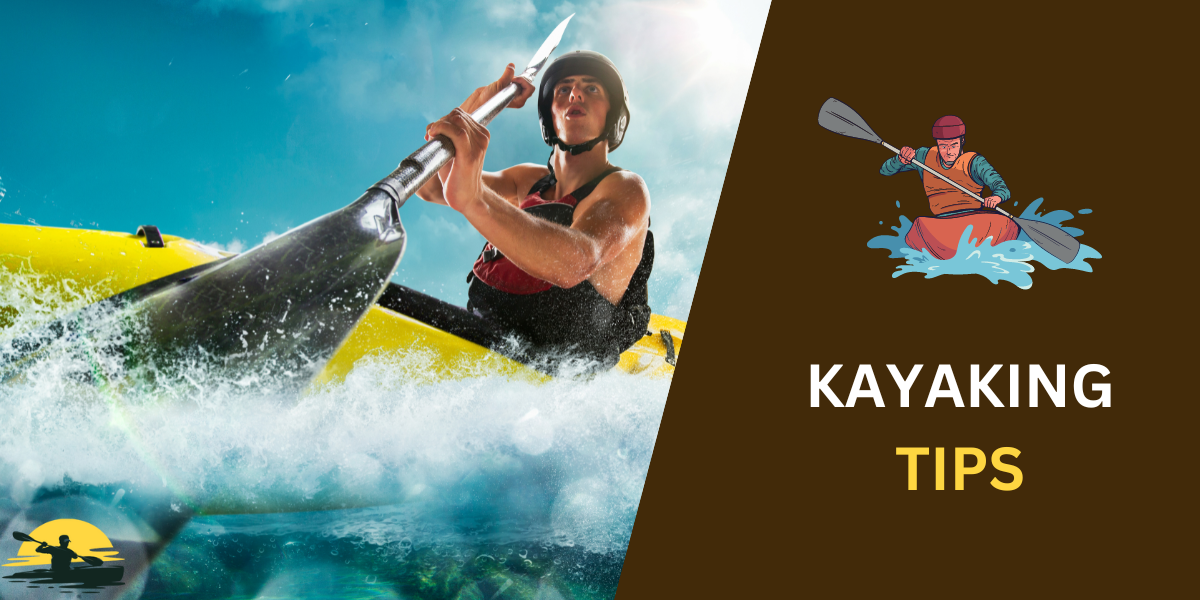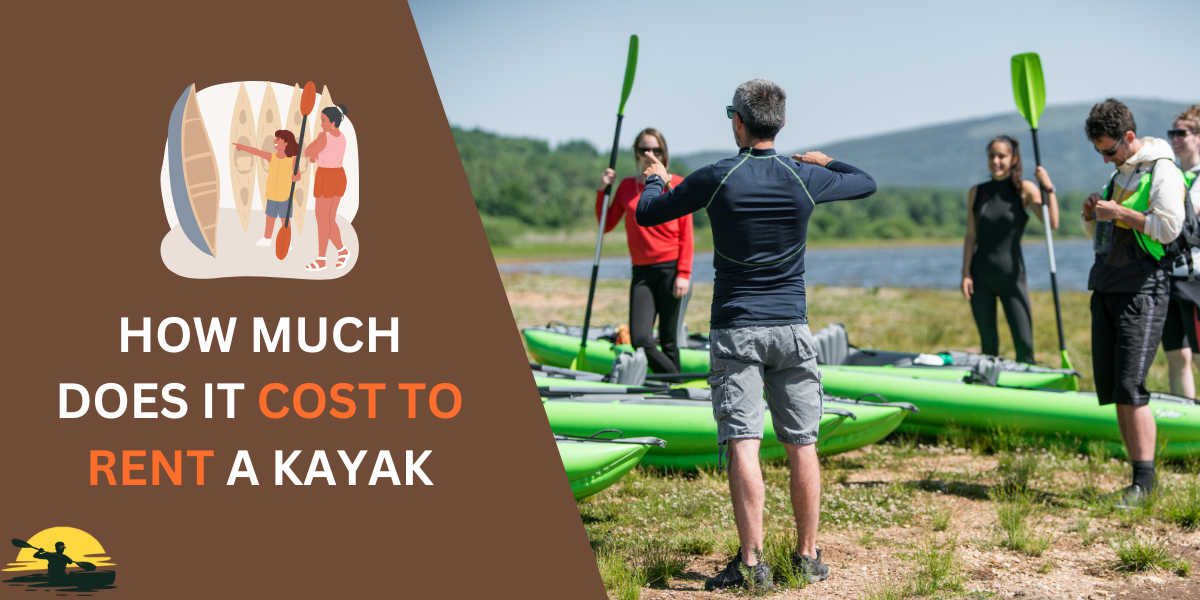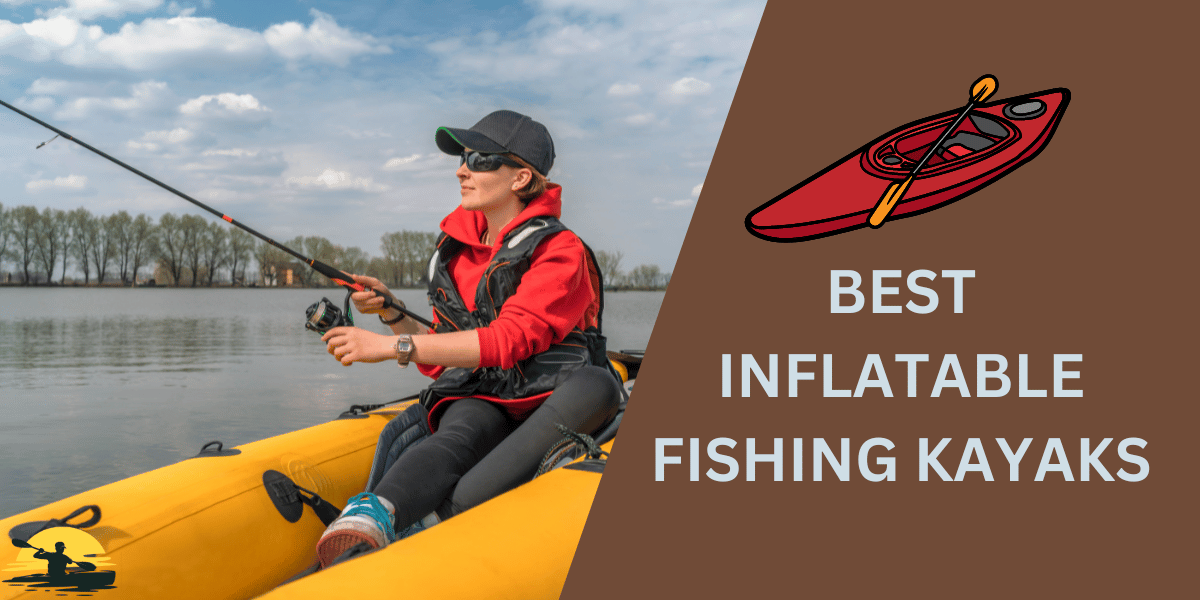
Have you ever wondered how far you could paddle your kayak in one day?
You could imagine covering long distances and exploring new places.
It’s frustrating to know if you can paddle a few miles or much more.
Factors like your skill level, the type of kayak, and the weather all make a big difference.
This comprehensive guide is your key to planning a realistic distance for your next kayaking day trip. It’s time to turn your kayaking dreams into a well-prepared reality.
We’ll cover everything from average speeds to what kind of kayak works best for longer trips.
Get ready to say goodbye to sore arms and hello to exciting adventures!
- It depends! Many factors affect how far you can go.
- Beginners: Expect to comfortably cover 5-8 miles on a day trip.
- Intermediate kayakers: 10-15 miles is a realistic target.
- Experienced paddlers: Depending on conditions and kayak type, distances of 20+ miles are achievable.
- Experience matters: Beginners get tired faster than seasoned kayakers.
- Fitness is key: Strength and stamina let you paddle for longer.
- Your boat makes a difference: Short recreational kayaks are slower than sleek sea kayaks.
- Weather is HUGE: Wind and currents can help or seriously slow you down.
- Safety first: Don’t push beyond your limits, especially if paddling solo.
- Start small, build up: Even experienced kayakers didn’t start with epic journeys.
What Changes How Far You Can Kayak
Let’s be real; not everyone can paddle the same distance in a day.
Here’s what makes a big difference in how far you’ll go:

- Your Experience: If this is your first trip, don’t expect to go super far. Beginners get tired faster. Experienced kayakers have the stamina and skills to cover more ground. It’s like the difference between a quick jog and a long run!
- How Fit You Are: Kayaking might look chill, but it uses a lot of muscles! Being in good shape gives you more energy for those long paddles. It’s like having a bigger gas tank in your car.
- Your Kayak: Short boats, like some recreational kayaks, are good for playing around, but they’re slow. Think of them like bikes with training wheels. Longer sea kayaks slice through the water way faster. Solo canoes can also be great for covering distance.
- Weather and Water: Imagine kayaking into a strong wind – it’s like paddling uphill! Calm waters or a nice tailwind make the miles fly by. Currents can help, too, but you need to know which way they’re going. Early spring water temperature also matters – cold water saps your energy way faster.
Important! No matter how far you think you can go, always:
- Know your limits: Don’t overestimate your skills.
- Have safety equipment: Even on calm days, accidents happen.
- Check the weather forecast: A sudden storm is no joke.
- Practice rescue skills: Knowing how to get back in your kayak in deep water is a must, especially for solo paddling.
Practical Distance Planning
Okay, it’s time to get practical!
Let’s talk average speed.
This isn’t how fast you might go in a sprint, but a steady pace you could keep up for a day paddle:

- Beginner: 1-2 miles per hour (mph). Think of a relaxed walking pace.
- Intermediate: 2-3 mph. It’s a good hiking speed.
- Experienced: 3+ mph. Imagine a fast jog… but you’re doing it with your arms!
How Far Does That Get You?
Let’s say you’re an intermediate kayaker paddling for 5 hours in good weather:
- 2.5 mph (average speed) x 5 hours = 12.5 miles. Not bad!
But remember: you’ll take rest stops, maybe stretch your legs on shore. So, a more realistic distance might be closer to 10 miles.
Tips for Planning Your Route
- Don’t bite off more than you can chew: Start with shorter trips and build up.
- Use maps & tide charts: Plan your route and know how the currents might affect you.
- Paddle with a buddy: It’s safer, and it can help keep you motivated.
- Be realistic: A 20-mile trip in a recreational kayak might sound epic, but it’ll probably be more exhausting than fun.
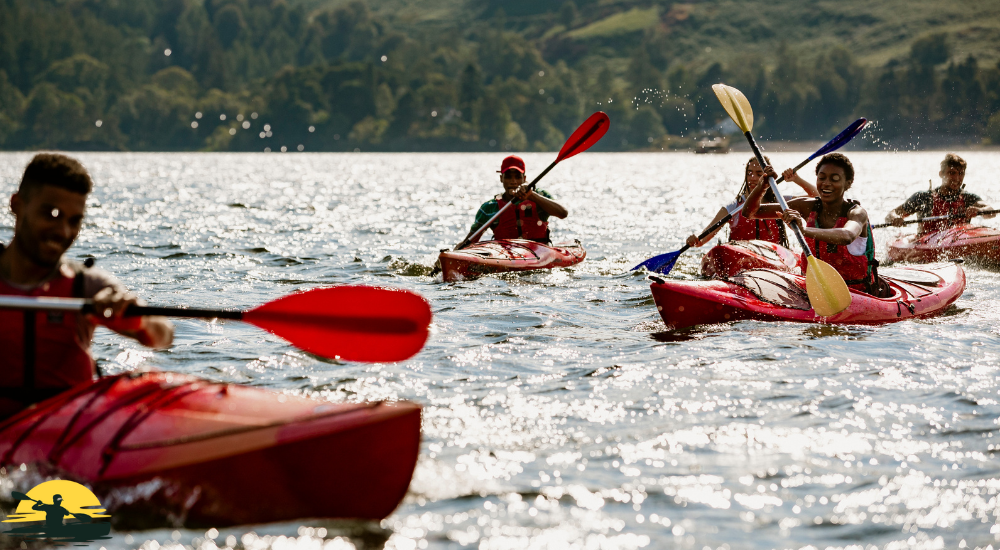
Gear Check! Besides your kayak & safety equipment, make sure you bring:
- Plenty of water: Dehydration will ruin your day.
- Enough food: Snacks keep your energy up.
- A small aid kit: Just in case!
Longer trips need more planning, but the idea is the same.
A faster kayak on flat water means you can cover way more distance with the same effort.
Let’s now look at ways to improve your kayaking game so you can paddle further!
Tips for Maximizing Your Distance
Good technique is like having a secret power for paddling further!
Here’s how to unlock it:
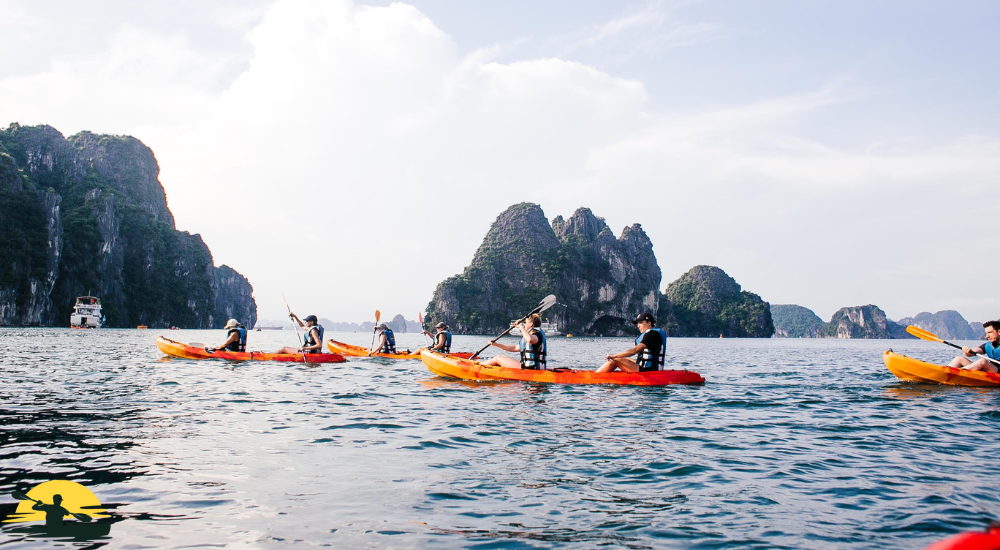
- It’s not all arms: Think of twisting from your core with each stroke (that’s called torso rotation). It gives way more power and saves your shoulders! Think of it as using your whole body, not just your arms.
- Watch the pros: Videos of good kayakers and canoeing can help you see what good technique looks like. Ask an experienced kayaker for tips, or even take a quick course!
- Pace yourself: Even pro paddlers don’t sprint all day long. Find a comfortable rhythm you can keep up for hours. Little breaks help, even if it’s just floating for a few minutes.
Other Factors that Make a Difference
- Your Fitness Level: A stronger body lets you paddle longer without getting as tired. This plays a significant role!
- The Route: A five-mile trip with wind and waves is way harder than the same distance on a calm lake.
- Your Boat: Even with good technique, a little recreational kayak won’t go as far or fast as a longer sea kayak.
- The Water: Rivers have currents (fighting it tires you out!), while the ocean can have tides AND waves. These vary depending on exactly where you’re paddling.

It’s Okay to Start Small
Even with perfect technique, a super fit paddler in the fastest boat won’t be kayaking across the ocean on their first outing.
Most people can comfortably enjoy several hours of paddling with lunch and breaks.
But there are folks out there who’ve paddled crazy distances – even around the world!
You can start where you’re at, work on your skills, and see how far YOU can go.
Why Long Distance Kayaking is Awesome
Forget going in circles for an hour! Kayaking longer distances unlocks a whole different kind of adventure:
- Achieve something big: Pushing your limits and reaching a destination far from where you started feels amazing. It’s like finishing a good book – satisfying!
- Explore like never before. Kayaks get you into places cars and even hiking boots can’t. Imagine finding hidden coves, secret beaches, or wildlife others never see!
- Connect with nature: Being on the water for hours surrounds you with sights and sounds you miss on land. It’s a great way to de-stress and clear your head.
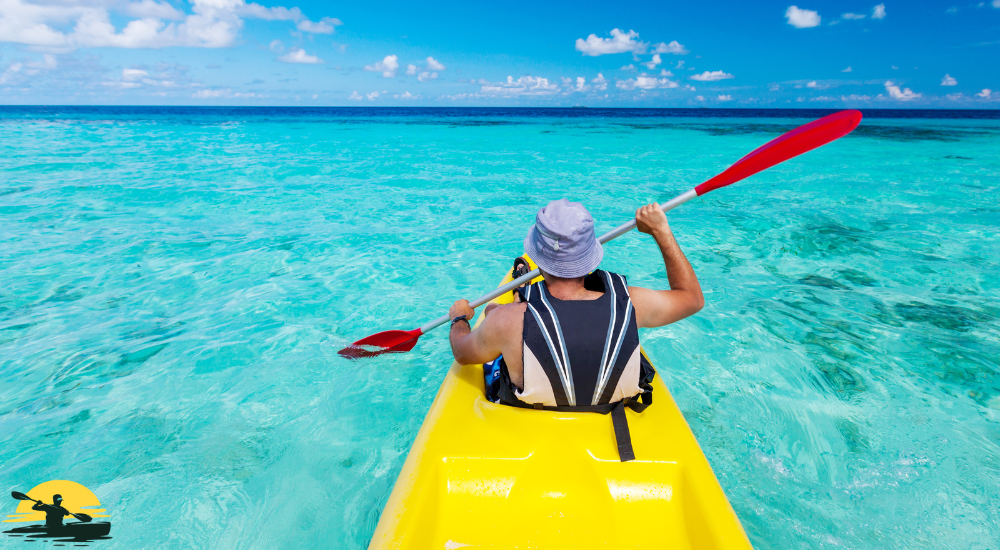
A Word of Caution
Longer trips are only for some.
If a five-mile paddle sounds terrible, don’t force it!
There’s nothing wrong with short outings that are all about having a good time.
Would you be ready to go further?
Here’s the key: slowly building up your skills and fitness is the smart way to get into long-distance kayaking.
You can focus on improving your technique, getting a bit stronger with each outing, and finding calm water locations to practice.
You might surprise yourself at the incredible places your kayak can take you!
Conclusion
Whether you dream of long-distance sea kayaking adventures or love exploring local spots, kayaking is awesome.
The key is finding what works for YOU.
Just remember:

- Be realistic about how far you can go. It’s all about factors like skill, fitness, and your boat.
- Safety always comes first. Learn those skills & check the weather.
- Start with shorter trips and build up. Don’t expect to paddle for hours on your first outing!
Kayaking can be a gentle float on a calm river or a challenging trip on the open water.
No matter how far you go, enjoy the journey. Get out there and start exploring!
Frequently Asked Questions
How far can I expect to kayak in a few hours?
A beginner in decent shape could go five miles in two to three hours on calm water. That allows time for breaks and enjoying the scenery. More experienced paddlers can cover much more ground at the same time.
Is it better to kayak long distances in a kayak or canoe?
Both kayaks and solo canoes are great for longer trips. Sea kayaks excel on open water, while canoes often have more space for gear on extended adventures. Choosing the right boat depends on your preference and where you’ll be paddling. A Solo canoe is also as interesting as a kayak.
Can I kayak long distances by myself?
Solo paddling is fine for experienced kayakers with the proper safety knowledge. If you’re new or paddling in challenging conditions, it’s always safer to go with a buddy.
How much does the weather impact the distance I can cover?
Weather makes a huge difference! Fighting wind or strong currents can be exhausting, while calm water and a tailwind make the miles fly by. Always check the forecast before setting out.
What factors should I consider when planning a longer kayaking trip?
In addition to your fitness and skill, consider your route, the type of water (lake, river, ocean), potential hazards, and the necessary gear. Always prepare thoroughly for adventures beyond short outings.





